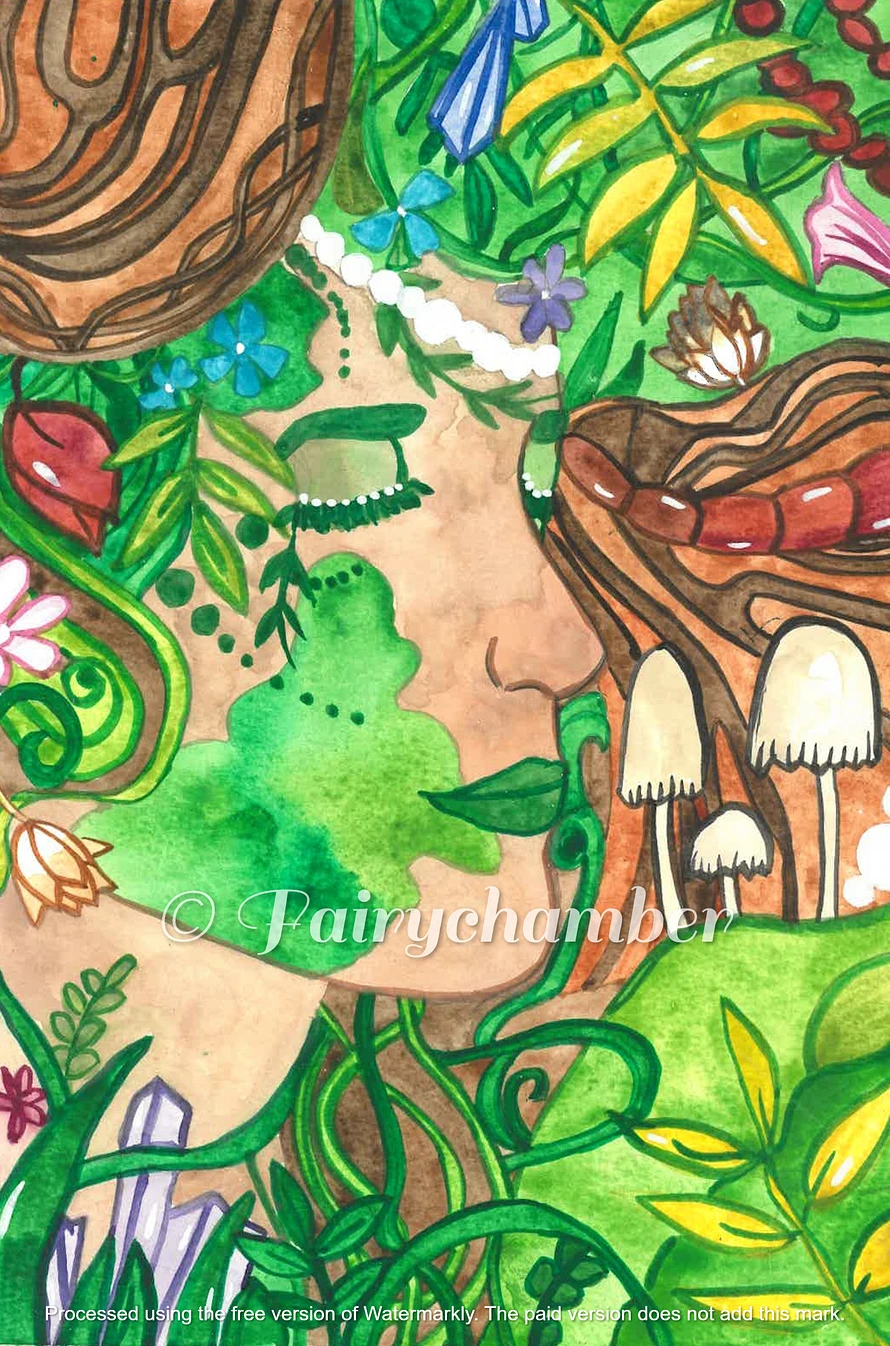
Tree Spirits
Each tree species was believed to have its own haltija the protector spirit. The Spirit of juniper was called Katajatar (kataja = juniper). They were told to be the most beautiful and kind-hearted of all tree spirits. Havutar was spirit of conifer trees. Hongatar was the spirit of pine trees (honka is an old Finnish meaning a dead pine tree or an extremely tall pine tree). Pihlajatar was the spirit of the rowan tree (pihlaja = rowan). Tuometar was the spirit of bird cherry (tuomi = bird cherry). Often tree spirits were considered to be daughters of Tapio the forest god and huntress goddess Mielikki. Tree worship was very common among Finno-Baltic and Saami tribes. Families had special trees in the yard called haltijapuu a fairy tree. There was a spirit living inside the tree and during major holidays and life events, family members would leave food and other sacrifices under the tree. Haltijapuu was planted when the family moved into the house or when a child was born.
Keijungainen
The concept of a small, winged fairy did not emerge in Finnish storytelling until the early 20th century, influenced by Victorian children's book illustrations. In Finnish folklore, nature spirits rarely had wings and were often described as exceptionally beautiful women. The Finnish word for fairy, "keiju," is derived from "Keijungainen," which refers to a small winged creature covered in either black or white fur. These beings were believed to inhabit cemeteries, and the best time to see them was during Kekri, when they were said to dance on gravestones. Folktales suggest that a person near death might see a Keijungainen flying nearby.

Maahinen
Gnomes were known as "maahinen" or "menninkäinen." These little beings lived underground. The term "maahinen" comes from the Finnish word "maa," which means earth. It was believed that the land of the maahinen resembled the human world, but everything there was upside down. When it was daytime in the human world, it was midnight in the realm of the maahinen. Menninkäinen were similar to maahinen but had a closer connection to the forest, plants, and animals. The magic of elves was ancient and powerful, and it was considered dangerous for humans to disturb them.
Tonttu
In Finnish mythology, there are various species of elves, with the most well-known being the tonttu. The word "tonttu" is derived from "tontti," which means an estate or a place where a building stands. Tonttus are considered protector spirits of buildings and are connected to ancestral worship. According to legend, the person who built a house became its guardian spirit after their passing. Similarly, the first person to take a bath in a
sauna would become the spirit of that sauna in the afterlife. Tonttus could also be found in granaries, stables, and cowsheds. They are typically described as small, older men or women, with male tonttu's often depicted as having long white beards.
If you are interested in Finnish folklore check out my new book Guided by the goddess/Finnish wheel of the Year https://www.amazon.com/dp/B0CLNKVZCF










